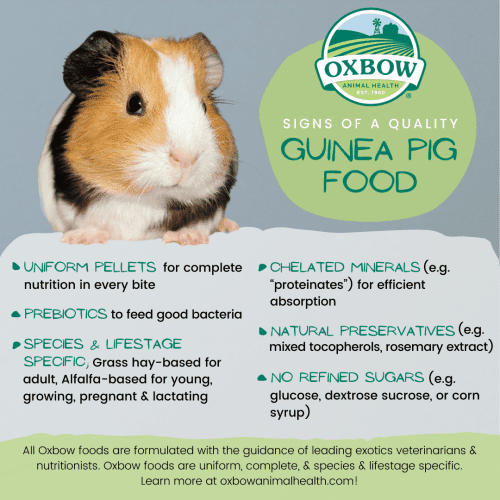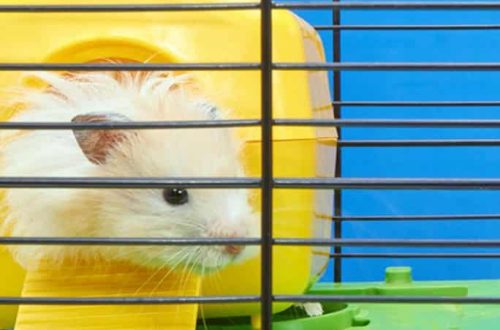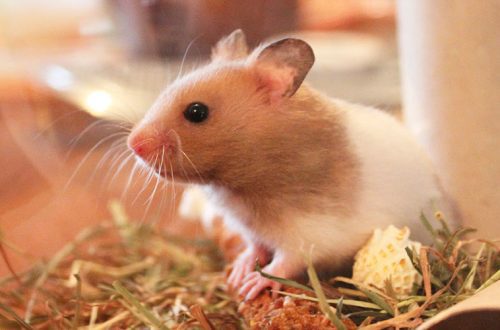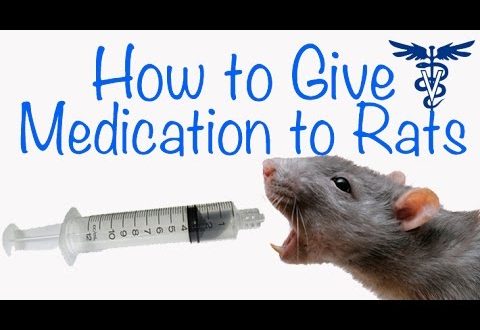
Meriv çawa ji bo berazê xweya guinea xwarina çêtirîn hilbijêrin
Nutritionists believe that natural food, which contains more fiber and nutrients, is better for pigs than special pellets that are sold in pet stores. Hay, grass, fresh vegetables – these foods are closer to the natural diet of guinea pigs. But in practice, the use of pelleted food is often much more convenient for breeders, especially during the cold season.
Below are tips for choosing quality pellets. They are based on the freshness of the granules, quality control, and quality control of the ingredients. It uses the AAFCO regulations (AAFCO is the government agency responsible for the control of animal feed).
Ingredients to watch out for when buying pellets:
- Animal products (including animal fat, meat, sterols, bone meal and eggs)
- Beet pulp (This is a controversial issue even in cat and dog food. It is believed that low quality fiber can clog the intestines. This is one of the many “human” foods that are harmful to animals)
- Seeds, nuts or vegetable oil (too high in protein and fat, unnatural (for guinea pigs) type of food, like food of little nutritional value)
- Rice Bran or Rice Flour (many by-products, no nutritional value by AAFCO)
- Vegetable fibers (each and every by-product can have sawdust in it
Sweeteners, colors and preservatives to watch out for:
- serxwebûn
- Corn syrup, high fructose
- sucrose
- Propylene glycol (contributes to premature death)
- Food coloring (including FD&C red, blue and yellow)
- Propyl gallite [Propyl gallate]
- Potassium Sorbate/Sorbitol [Potassium sorbate]
- Table salt or salts [Sodium nitrate, sodium nitrite, or sodium metabisulfate]
- [Butylated hydroxyanisole (BHA)/Butylated hydroxytoluene (BHT)]
Lucerne or Timofeevka?
Most guinea pig pellets are based on alfalfa. Alfalfa pellets are suitable for feeding small, growing and pregnant gilts. After the gilt has reached the age of one year and is developing well, it is better to use timothy pellets, which have a lower calcium content. Make sure pellets are made specifically for gilts, with added vitamin C. Choose pellets that are free of nuts, seeds, dried fruit, and colored pieces. Seeds in the shell (husk) can choke the pig. A guinea pig will eat about 1/8 cup of pellets when supplemented with hay and vegetables. Buy granules in small quantities and store them in a dry, dark, cool place to avoid loss of vitamin C (check the freshness of the granules by the date on the package).
©Guinea Lynx
©Translated by Anna Belkova
Nutritionists believe that natural food, which contains more fiber and nutrients, is better for pigs than special pellets that are sold in pet stores. Hay, grass, fresh vegetables – these foods are closer to the natural diet of guinea pigs. But in practice, the use of pelleted food is often much more convenient for breeders, especially during the cold season.
Below are tips for choosing quality pellets. They are based on the freshness of the granules, quality control, and quality control of the ingredients. It uses the AAFCO regulations (AAFCO is the government agency responsible for the control of animal feed).
Ingredients to watch out for when buying pellets:
- Animal products (including animal fat, meat, sterols, bone meal and eggs)
- Beet pulp (This is a controversial issue even in cat and dog food. It is believed that low quality fiber can clog the intestines. This is one of the many “human” foods that are harmful to animals)
- Seeds, nuts or vegetable oil (too high in protein and fat, unnatural (for guinea pigs) type of food, like food of little nutritional value)
- Rice Bran or Rice Flour (many by-products, no nutritional value by AAFCO)
- Vegetable fibers (each and every by-product can have sawdust in it
Sweeteners, colors and preservatives to watch out for:
- serxwebûn
- Corn syrup, high fructose
- sucrose
- Propylene glycol (contributes to premature death)
- Food coloring (including FD&C red, blue and yellow)
- Propyl gallite [Propyl gallate]
- Potassium Sorbate/Sorbitol [Potassium sorbate]
- Table salt or salts [Sodium nitrate, sodium nitrite, or sodium metabisulfate]
- [Butylated hydroxyanisole (BHA)/Butylated hydroxytoluene (BHT)]
Lucerne or Timofeevka?
Most guinea pig pellets are based on alfalfa. Alfalfa pellets are suitable for feeding small, growing and pregnant gilts. After the gilt has reached the age of one year and is developing well, it is better to use timothy pellets, which have a lower calcium content. Make sure pellets are made specifically for gilts, with added vitamin C. Choose pellets that are free of nuts, seeds, dried fruit, and colored pieces. Seeds in the shell (husk) can choke the pig. A guinea pig will eat about 1/8 cup of pellets when supplemented with hay and vegetables. Buy granules in small quantities and store them in a dry, dark, cool place to avoid loss of vitamin C (check the freshness of the granules by the date on the package).
©Guinea Lynx
©Translated by Anna Belkova
Kengê, çawa û çi meriv berazek guinea bide xwarin?
Çi bixwin? Kengê xwarinê? Çawa xwarinê? Û bi gelemperî, çiqas bi graman ve girêdayî ye? Ev yek ji wan pirsên ku ji hêla xwediyên berazên guinea ve têne pirsîn e. Û ev tê fêm kirin, ji ber ku tendurustî, xuyang û hewaya heywanê bi parêza rast ve girêdayî ye. Werin em wê bihesibînin!





